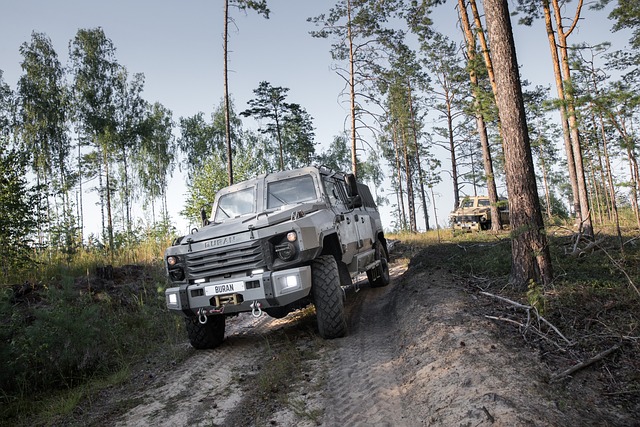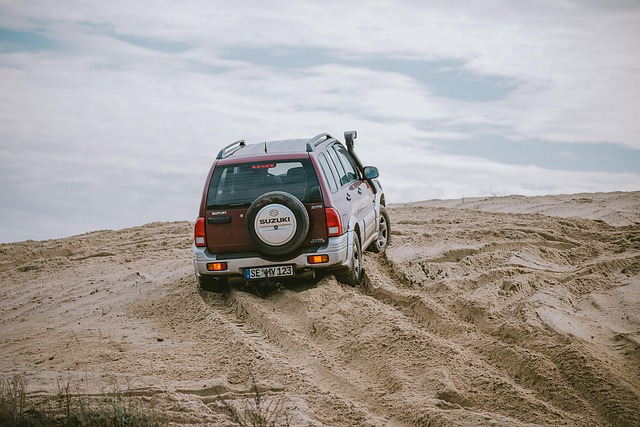Break calipers are vital for 4×4 vehicles, offering reliable off-road braking and weight control. In the competitive RGV parts market, fixed calipers excel in durability, while floating calipers balance performance and cost. For upgrades, accurately identify your vehicle and choose calipers suited to your off-roading needs, ensuring compatibility with your brake system. Correct installation is key for even braking. Regular maintenance prevents issues like seized pistons or corroded components. Accessing high-quality, specific-model calipers from reputable suppliers online ensures optimal performance and safety on rugged trails.
“Unleash your off-road potential with a deep dive into the essential component of your 4×4’s braking system – the brake caliper. This guide, tailored for RGV owners, explores the intricate world of calipers, their diverse designs, and how they dictate your vehicle’s stopping power. From understanding caliper roles in 4x4s to selecting the perfect match for your rig and troubleshooting common issues, we equip you with knowledge. Discover the impact of quality parts on your RGV’s performance, and elevate your off-road adventures with enhanced braking control – a must-read for all 4×4 enthusiasts.”
- Understanding Brake Calipers: Their Role in 4×4 Vehicles
- The Different Types of Caliper Designs for RGV 4x4s
- How to Choose the Right Brake Caliper for Your 4×4
- Installation and Maintenance Tips for Calipers
- Common Issues and Troubleshooting for 4×4 Brake Calipers
- Accessing Quality Caliper Parts: A Guide for RGV Owners
Understanding Brake Calipers: Their Role in 4×4 Vehicles

Brake calipers are a critical component in any vehicle, but they’re especially vital for 4x4s due to their unique demands off-road. These powerful tools play a pivotal role in slowing down and stopping your rig, which is essential for navigating challenging terrain. In 4×4 vehicles, where weight distribution can shift dramatically during driving, calipers help maintain consistent braking performance across all wheels.
When exploring 4×4 parts and accessories RGV, understanding brake calipers’ function becomes paramount. They are the mechanical arms that squeeze the brake pads against the rotors, converting kinetic energy into heat, thereby reducing vehicle speed. In harsh off-road conditions, robust calipers ensure reliable braking, enabling drivers to tackle steep descents, mud-slinging turns, and unexpected obstacles with confidence.
The Different Types of Caliper Designs for RGV 4x4s

In the realm of 4×4 parts and accessories, RGV vehicles rely on robust and reliable brake calipers for optimal performance off-road. The market offers a diverse range of caliper designs tailored to cater to various RGV models and driving conditions. One prominent design is the fixed caliper, known for its consistent braking power and durability. This type is particularly favored among folks who frequently navigate rugged terrains, as it provides superior control over speed reduction in challenging circumstances.
Another popular choice are floating calipers, which offer a balance between performance and cost-effectiveness. Unlike their fixed counterparts, these calipers allow for some movement, reducing the likelihood of warping under extreme conditions. This design is a game-changer for those seeking an upgrade without breaking the bank, enhancing overall braking efficiency in the process. Both types are integral components in the 4×4 parts and accessories market, catering to diverse RGV owner needs on the trail.
How to Choose the Right Brake Caliper for Your 4×4

When upgrading or replacing brake calipers for your 4×4, it’s crucial to select the right fitment for optimal performance and safety. The first step is to identify your vehicle’s make, model, and year, as different 4x4s require specific caliper sizes and mounting patterns. Many 4×4 parts and accessories RGV stores offer extensive catalogs with detailed specifications to guide your selection. Look for calipers designed for off-road use, which often feature stronger construction and improved heat dissipation capabilities to handle the demands of rough terrain.
Consider the type of brakes your 4×4 is equipped with, such as disc or drum, and choose calipers compatible with these. Additionally, factor in your desired level of performance: if you’re planning on heavy-duty off-roading, seek calipers with higher clamping force ratings and heat resistance. Ensure proper clearance for your tires and wheel dimensions to avoid any interference issues. By carefully considering these factors, you can select the ideal brake caliper upgrade for your 4×4, enhancing stopping power and ensuring a safer driving experience in rugged conditions.
Installation and Maintenance Tips for Calipers

When installing brake calipers, ensure proper alignment with the rotor for even braking power. Use a jack and stand to safely lift and support the vehicle, then carefully slide the calipers into place. Tighten the bolts securely, cross-referencing torques specified by the manufacturer. For 4×4 vehicles and those equipped with high-performance RGV (off-road) parts and accessories, consider using stiffer caliper mounting brackets for enhanced stopping precision on rough terrain.
Regular maintenance is key to optimal caliper performance. Inspect pads for wear and replace them when necessary, as worn pads can damage rotors. Lubricate caliper pins and slides with a lightweight lubricant designed for automotive applications to reduce friction and corrosion. Periodically check brake fluid levels and ensure they’re within the recommended range. Remember, well-maintained calipers contribute to improved safety and control, especially when tackling challenging 4×4 trails with RGV accessories.
Common Issues and Troubleshooting for 4×4 Brake Calipers

When it comes to 4×4 vehicles, reliable brake calipers are essential for safe off-road adventures. However, like any component, calipers can encounter issues that affect performance and safety. Common problems include seized or corroded pistons, worn out pads, and improper alignment. These issues may result in reduced braking power, pulling to one side during braking, or a soft pedal response.
Troubleshooting these problems involves checking for signs of wear and corrosion, ensuring proper pad clearance, and verifying the caliper’s alignment. If you’re dealing with seized pistons, a thorough cleaning and lubrication might be enough. For worn pads, replacement is usually required. Regular maintenance and using high-quality 4×4 parts and accessories RGV can prevent these issues from arising or mitigate their impact, ensuring your vehicle stops effectively during rugged terrain excursions.
Accessing Quality Caliper Parts: A Guide for RGV Owners

Accessing quality caliper parts is essential for any RGV owner looking to enhance their vehicle’s performance. In the world of 4×4 parts and accessories RGVs, reliable components are key to ensuring safety and efficiency on rugged terrain. When it comes to brake calipers, selecting genuine or high-quality aftermarket parts is crucial. Reputable suppliers offer a range of options tailored for RGV models, ensuring compatibility and durability.
For RGV owners, navigating the market for caliper parts can be straightforward with some research. Online platforms dedicated to 4×4 enthusiasts often provide detailed product descriptions and customer reviews, aiding in the selection process. Remember that when investing in new calipers, checking for proper fitment and industry standards is vital to avoid any compatibility issues or reduced braking performance.
When it comes to enhancing your RGV 4×4’s performance and safety, especially in challenging off-road conditions, investing in quality brake calipers is a game-changer. This article has guided you through the intricacies of caliper design, selection, installation, and maintenance, empowering you to navigate the world of 4×4 parts and accessories RGVs effectively. By understanding the common issues and having access to reliable caliper parts, you can ensure your vehicle stops securely and efficiently, no matter the terrain.
